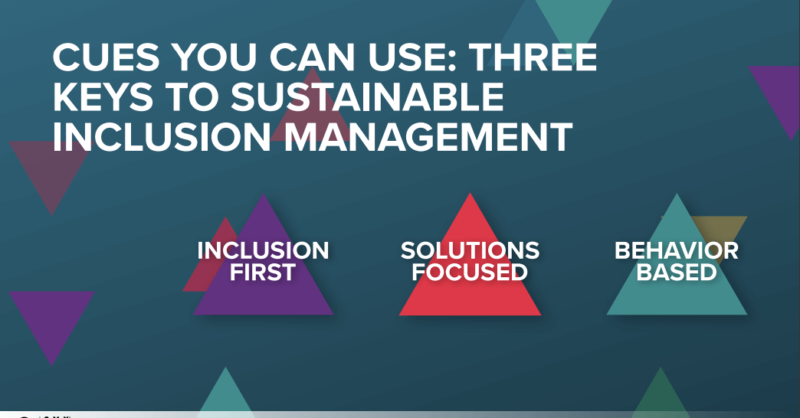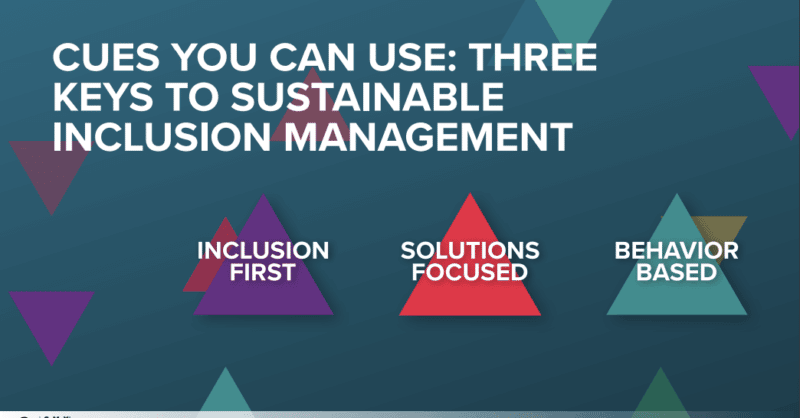Traditional diversity management practices are like resuscitating a canary in a coal mine, says Dr. Lauren Tucker, CEO of Do What Matters: “Too often we focus on the canaries,” she said in her presentation at SMX Next, “and nobody’s thinking about the miners or the root of the issue, which is what’s happening in the mine that’s threatening the canaries and the miners.”
Tucker and her team asked important questions about these challenges that companies everywhere should take to heart: “Could we create sustainable change by reframing the approach to diversity and equity and inclusion by starting with inclusion first? What if we focused on the operational inefficiencies in the organizations that fostered exclusion and bias?”

Inclusion management is about getting the right people doing the right work, says Tucker. Here are five ways she suggests marketers promote inclusion and diversity within their companies.
Prime yourself and your colleagues for critical thinking
Tucker recommends marketers use the phrase, “The task at hand requires critical thinking,” to get their team members thinking more deeply.
“You can use this as an integral part of facilitating meetings and collaborating,” she said. “Say this out loud and you can prime people to undercut that fast thinking that we usually bring to meetings and make sure that we are being thoughtful about what we’re saying, what we’re doing, and how we’re interacting.”
These practices can help marketers make critical thinking habitual. This first step, if taken seriously, can reduce the influence of unconscious bias that affects people’s choices and behavior.
Reframe excuses regarding inclusivity
“When it comes to inclusion, equity and diversity, there are a lot of people we call ‘knee-draggers,’” Tucker said, referring to colleagues that are reluctant to make positive changes for inclusivity. “And it’s often because they think this is a zero-sum game.”
“It’s a win-win game, but sometimes we have to reframe the conversation to undercut the excuses that are given for not working on a more inclusive culture,” she added.
Marketers can change perspectives on inclusivity by highlighting alternative ways of thinking. Phrases such as “A great idea can come from anywhere,” or even the more hardline “Are you sure your team [is] the only one with the best ideas in the entire organization?” may open up colleagues to have a more inclusive conversation about where ideas come from.
Examine your perceptions
“Assume that everybody around you is at their best — putting their best work on the table,” said Tucker.
By starting with a good faith view of others, marketers will have to justify any negative personal evaluations of their team members. This can help open their eyes to bias.
“Make sure that you are not making quick judgments that are inexplicable or negative about somebody’s performance,” she said. “Maybe they’re just doing something differently than you would.”
Look at the bigger picture
We often fall into the trap of stereotyping other ideas or people based on reinforcement biases. This tends to occur when we view our work in a silo, rather than seeing its connection to the rest of our organization.
Tucker recommends asking questions to broaden these views and those of coworkers: “Get in a room with your colleagues and start to ask, ‘Are we reflecting the full complexity of the human experience, or are we leaning too far to one type of an experience versus another?’”
Opening your department or organization to the bigger picture can undermine bias and encourage greater creativity and innovation.
Get managers and colleagues asking, “Why not?”
Instead of asking organizations to introduce these practices as “add-ons,” marketers should present these changes as necessities.
“Frame inclusion as a must-have by getting managers and colleagues to opt-out and give reasons why,” Tucker said. “Ask managers to identify and express reasons why we shouldn’t use a certain inclusion nudge instead of trying to convince them about why we should.”
When enough people believe inclusion should be foundational in their company, there is a greater chance that higher-ups will listen. Tucker encourages asking managers to identify and express why they would be against further inclusion and diversity, rather than trying to convince them that these values are important.
But this focus on inclusion must be directed at oneself, too, she says. We all have our deficiencies when it comes to diversity, whether they involve other people or departments — becoming aware of them will make it easier to fast-track these transformations.
“Include people, information, ideas and knowledge into your processes. Nurture and embrace differences instead of polarizing, conquer outdated social norms and discriminatory practices instead of maintaining them.”
“A lot of times inclusion is about making sure you have the right disciplines in the room,” she added.
Watch the full SMX Next presentation here (free registration required).
The post 5 ways to promote inclusion in your marketing organization appeared first on Search Engine Land.
Source: Search Engine Land

